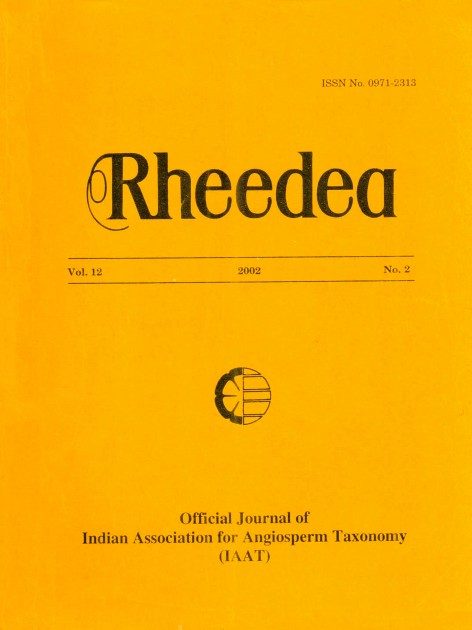Classification of South Indian species of Piper L. (Piperaceae) by metric method
Mathew P.J. & P.M. Mathew
Published on : 01-Jan-2022
DOI : https://dx.doi.org/10.22244/rheedea.2002.12.02.04
DownloadAbstract
Thirteen indigenous species of Piper have been subjected to cluster analysis hy metric method. They are grouped into five objectively delimited clusters based on phenetic resemblances determined in terms of values of similaiity coefficients (S) using 50 characters from three disciplines (morphology, cytology and palynology). Of the five clusters I and V constitute phenons of very high ranks of 83 and 88% phenons respectively, the other two - II and IV are related each at 66% phenons, and the cluster lll is a single member and one. The inter-cluster similarity values indicate that the groups I and II are most distantly affiliated, while groups I and II are least distant. The grouping based on phenetic resemblances shows some agreement with the morphological groupings proposed by Hooker (1886) and Gamble (1925) and so certain other obvious disagreements between the two exist. The notable disagreement is concerning the placement of Piper nigrum L.
